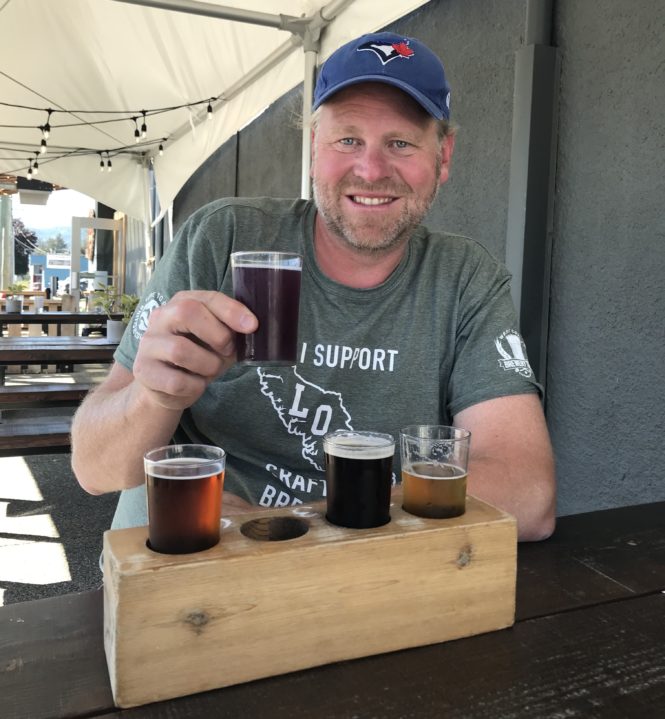Craft beer has been continuously brewed in B.C. since 1984.
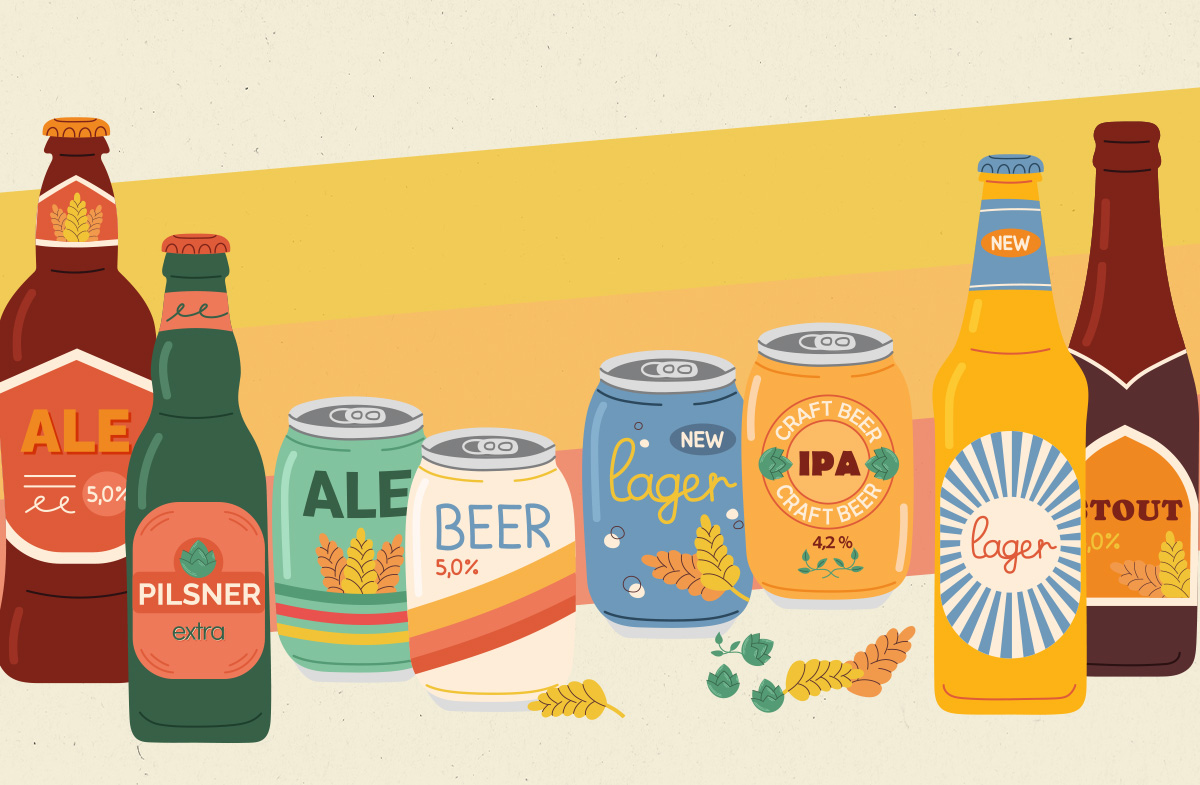
Forty years ago, the beer scene in British Columbia was vastly different from today. Neighbourhood pubs were scarce. Dingy basement beer parlours and hotel bar taps were dominated by the Big Three breweries of the day—Carling O’Keefe, Labatt and Molson—which all brewed similar light “lagers” with little character or distinction from each other. Thanks to the occasional import from the UK or Europe and the advent of home brewing, more and more people became curious about beer and began to seek variety and authenticity.

1984 – Spinnakers Brewpub opens in Victoria
The arrival of this British-style brewpub that served a wide range of styles alongside delicious food in a beautiful venue on Victoria’s Inner Harbour kicked off the microbrewing revolution in Canada and even inspired many of the early craft beer pioneers south of the border.
That same year, Granville Island Brewing opened in Vancouver with an initial focus on European-style premium lagers that set it apart from the mass market beer of the day — plus it was open for off sales on Sundays when the liquor stores were closed.
OK Pale Ale & Shaftebury Cream Ale
 Unless you were drinking beer here in the late ‘80s or early ‘90s you likely don’t realize just how important Okanagan Spring Brewing was. The few microbreweries that were open at this point were small operations that didn’t have the means to distribute very far beyond their local communities. But OK Spring was big and it worked hard to sell its beer everywhere in the province. The Vernon-based brewery eventually got bought out by Sapporo and lost its authentic beer cred, but not before teaching a lot of bar owners and customers that there were other brewed-in-B.C. options out there.
Unless you were drinking beer here in the late ‘80s or early ‘90s you likely don’t realize just how important Okanagan Spring Brewing was. The few microbreweries that were open at this point were small operations that didn’t have the means to distribute very far beyond their local communities. But OK Spring was big and it worked hard to sell its beer everywhere in the province. The Vernon-based brewery eventually got bought out by Sapporo and lost its authentic beer cred, but not before teaching a lot of bar owners and customers that there were other brewed-in-B.C. options out there.
Also important during this time was Shaftebury, a Vancouver brewery that acted as a training ground for many future brewers, most notably Iain Hill, co-owner of Strange Fellows Brewing, who got his start there washing kegs and brewing on the night shift. Sadly, Shaftebury was also sold off and closed, and although you might see the brand in BC Liquor Stores today, it is nothing like the original.
Beer Festivals & Brewery Booms
By the mid-’90s there were about a dozen breweries in B.C. and growing interest among consumers—enough for Gerry Hieter and John Rowling to launch the Great Canadian Beer Festival in Victoria, an event that celebrated its 30th anniversary in September of this year.
The Autumn Brewmaster’s Festival also took place in Vancouver, featuring several local breweries plus a few others from elsewhere. This was a sign of the new brewery boom that was taking place in the city at the time, including places like Storm, R&B, Steamworks, and Yaletown. Although the festival didn’t survive, it was an opportunity for some of the beer community’s early leaders to connect, and contributed to much of the growth that followed.
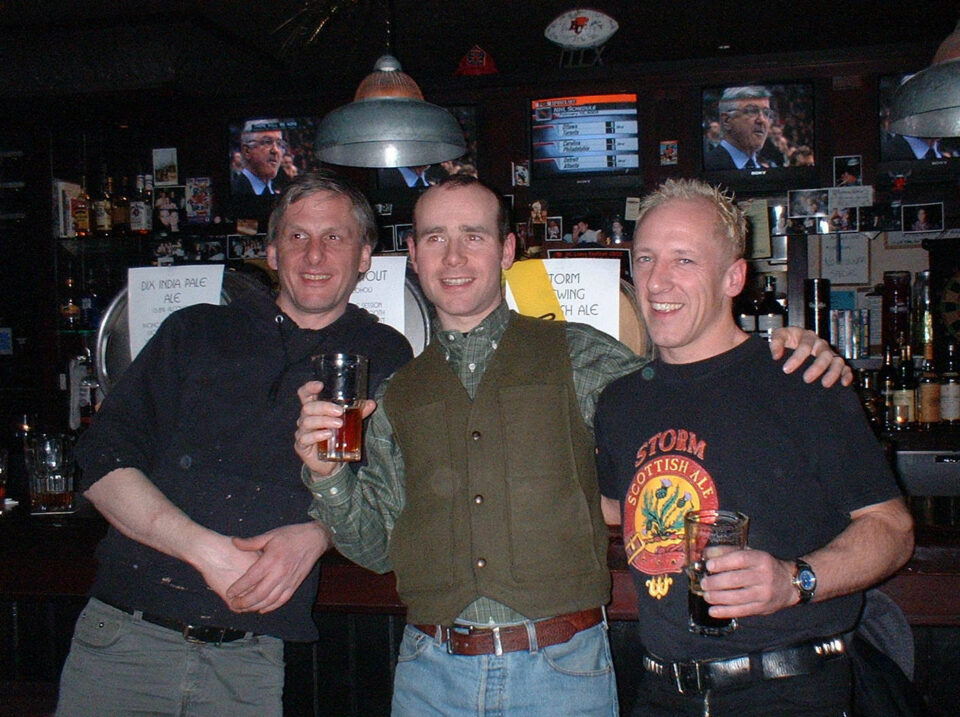
CAMRA, Casks & IPAs
The first decade of the new millennium featured a gradual but steady expansion of new breweries all over B.C.—just not in Vancouver. However, several important trends were developing in the city, and they would create an engine for the huge boom that came next. And at some point in the 2000s, we all started calling it “craft beer” instead of microbrew.
CAMRA Vancouver played a major role in developing the city’s craft beer culture. This volunteer-run advocacy group regularly produced beer events that encouraged local brewers to experiment and improve. Much of this experimentation occurred through cask-conditioned beer. Popular weekly cask nights were held at restaurants and pubs, and CAMRA’s own cask festivals were hugely popular events.
This is also when early IPAs began to evolve into the hop-infused brews we know and love today. Brewers like Gary Lohin at Central City and Tony Dewald at Dix ushered in a whole new era of potently pungent hop bombs, culminating in the introduction of Driftwood’s Fat Tug IPA at the end of the decade.
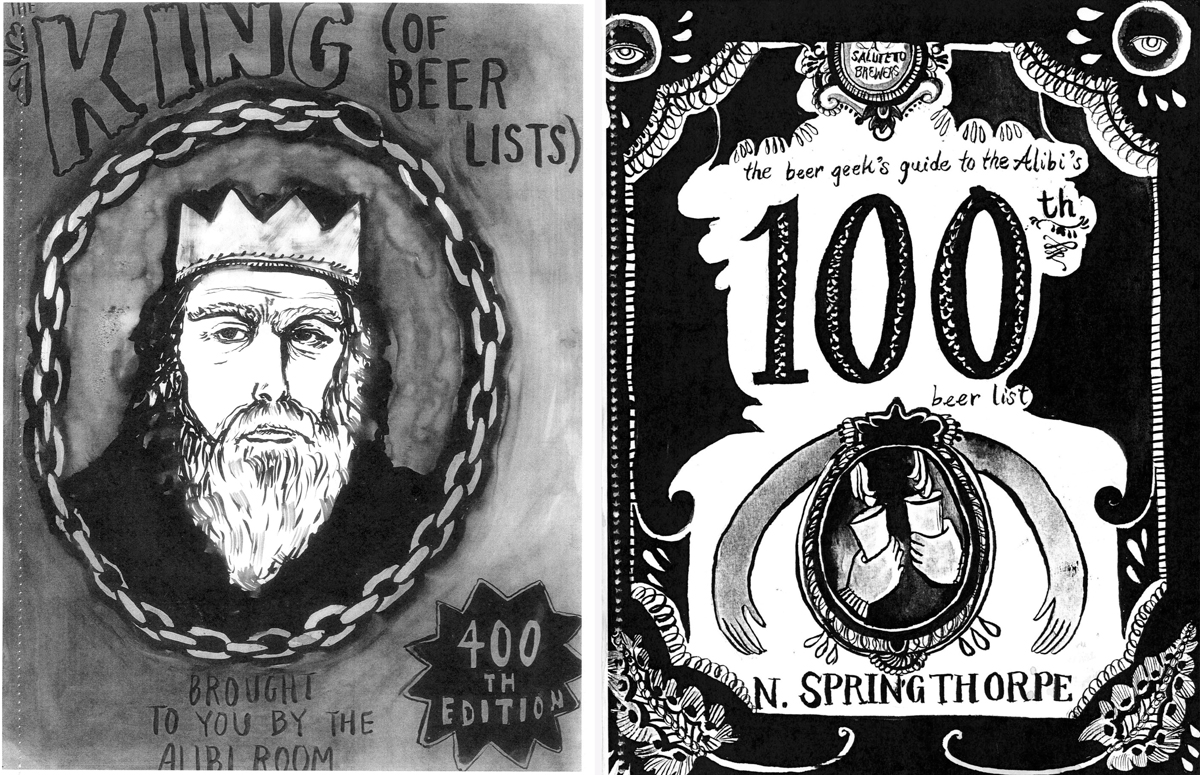
Bottle Shops & Tap Houses
Private cold beer and wine stores began to branch out beyond the usual fare you could find in government stores. Some chose to specialize in craft beer, bringing in exciting products from the U.S. and Europe, and filling walls of fridges with 650-ml “bomber” bottles, the popular format of the day that has since been mostly replaced with tall cans. Bottle Shops were very popular with beer nerds and brewers alike.
When Nigel Springthorpe and his partners took over the Alibi Room in 2006, he was interested in beer but didn’t know much about it. Over the next few years, he created B.C.’s first true “tap house” with 50 taps and the best beer line-up in the province—probably all of Canada. Beer lovers attended in droves and brewers clamoured to get their beers served there. Eventually, he took that experience with him when he opened Brassneck Brewing with Conrad Gmoser. And who can forget the amazing centennial tap list celebrations with photocopied booklets featuring original cover art and “philosophical” essays by Nigel?
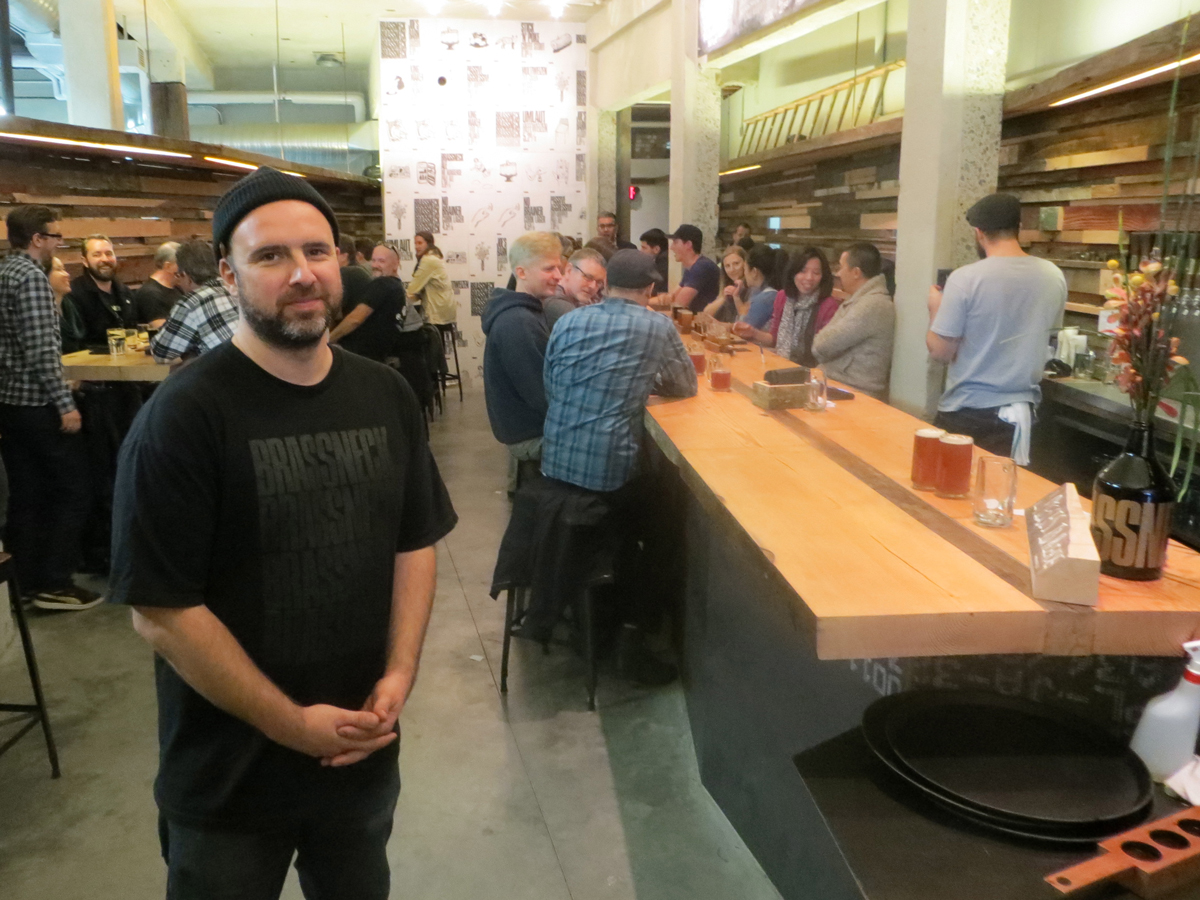
Tasting Rooms
Early in 2013, the B.C. government changed liquor laws to allow breweries to obtain “lounge endorsements” on their manufacturing licences, which created a new tasting room model for small breweries. This led to a huge boom—it’s safe to say that 99% of the 200 or so breweries that have opened since then have done so with a lounge as their main point of sale, even if they later grew to a model where bulk sales and distribution became more important to their bottom lines. This led to a “craft beer revolution” that has transformed the way beer is perceived and consumed by the community.
Post-Pandemic Plunge
The pandemic was terrible for the industry, forcing many breweries to spend money they didn’t have to buy canning lines and set up distribution networks so they could sell their products outside their tasting rooms. Even as the health restrictions eased, economic doldrums and negative news about alcohol consumption hit these small businesses hard as they were just starting to recover. Add higher costs for everything and a young generation that seems to prefer weed over beer, and today’s world is a very challenging landscape for many breweries.
Brighter Days Ahead
But let’s not dwell on the negatives! After all, beer has never tasted as good as it does now. There is so much skill and creativity evident in the wide range of beers brewed here, and B.C. breweries continue to win more than their fair share of awards at national and international competitions. You can do your part by spending money at your local brewery, helping to ensure they’ll be around a year from now, if not a decade or even longer.

